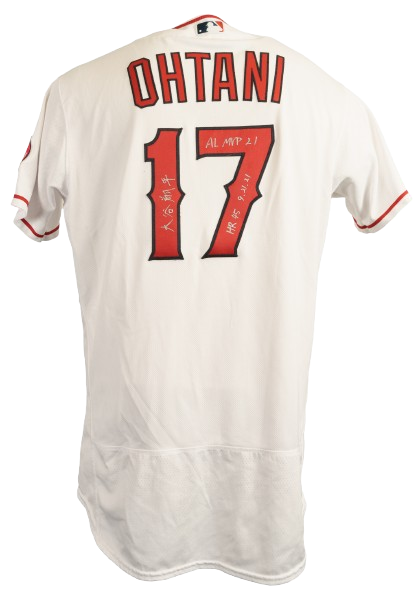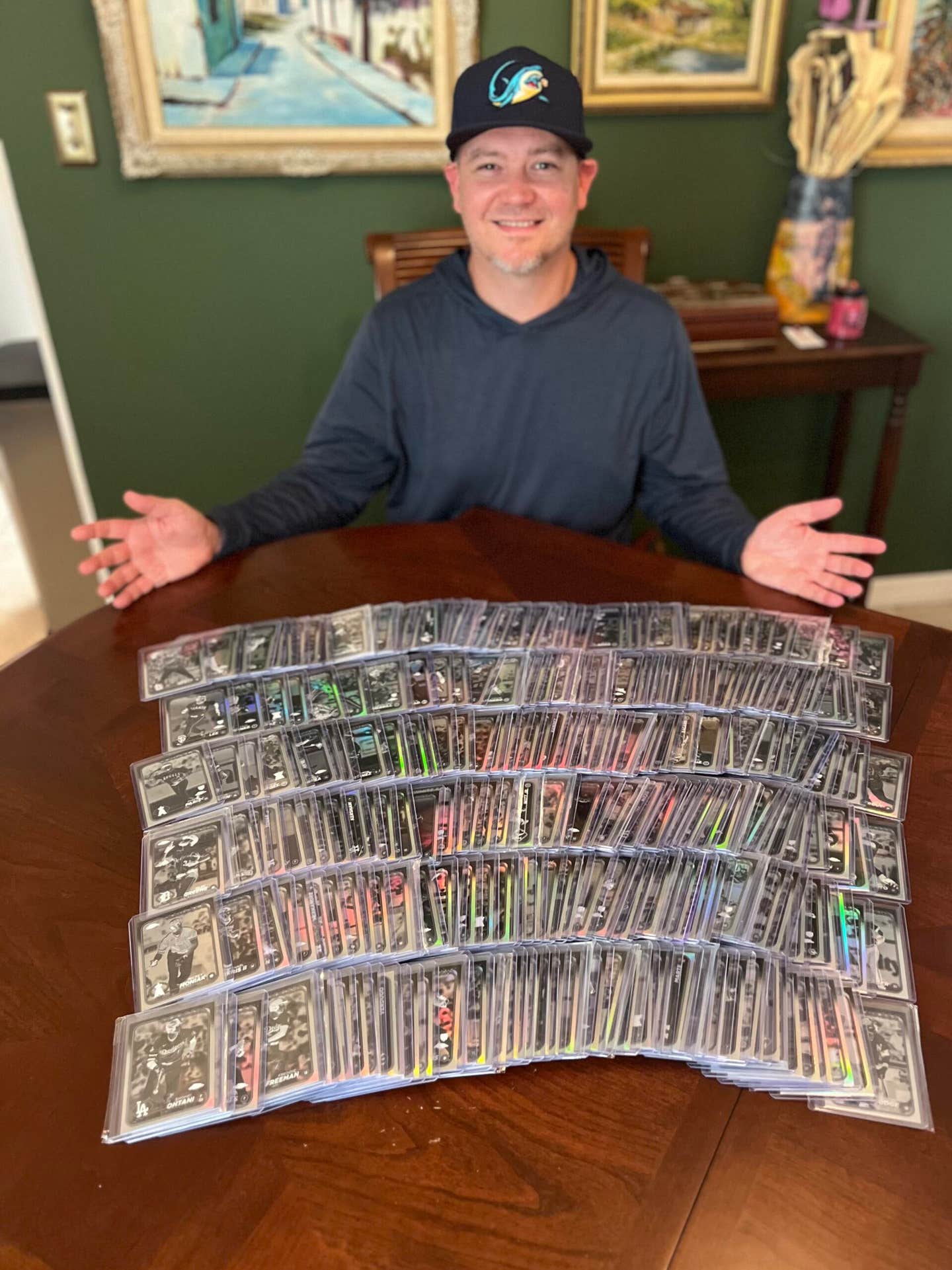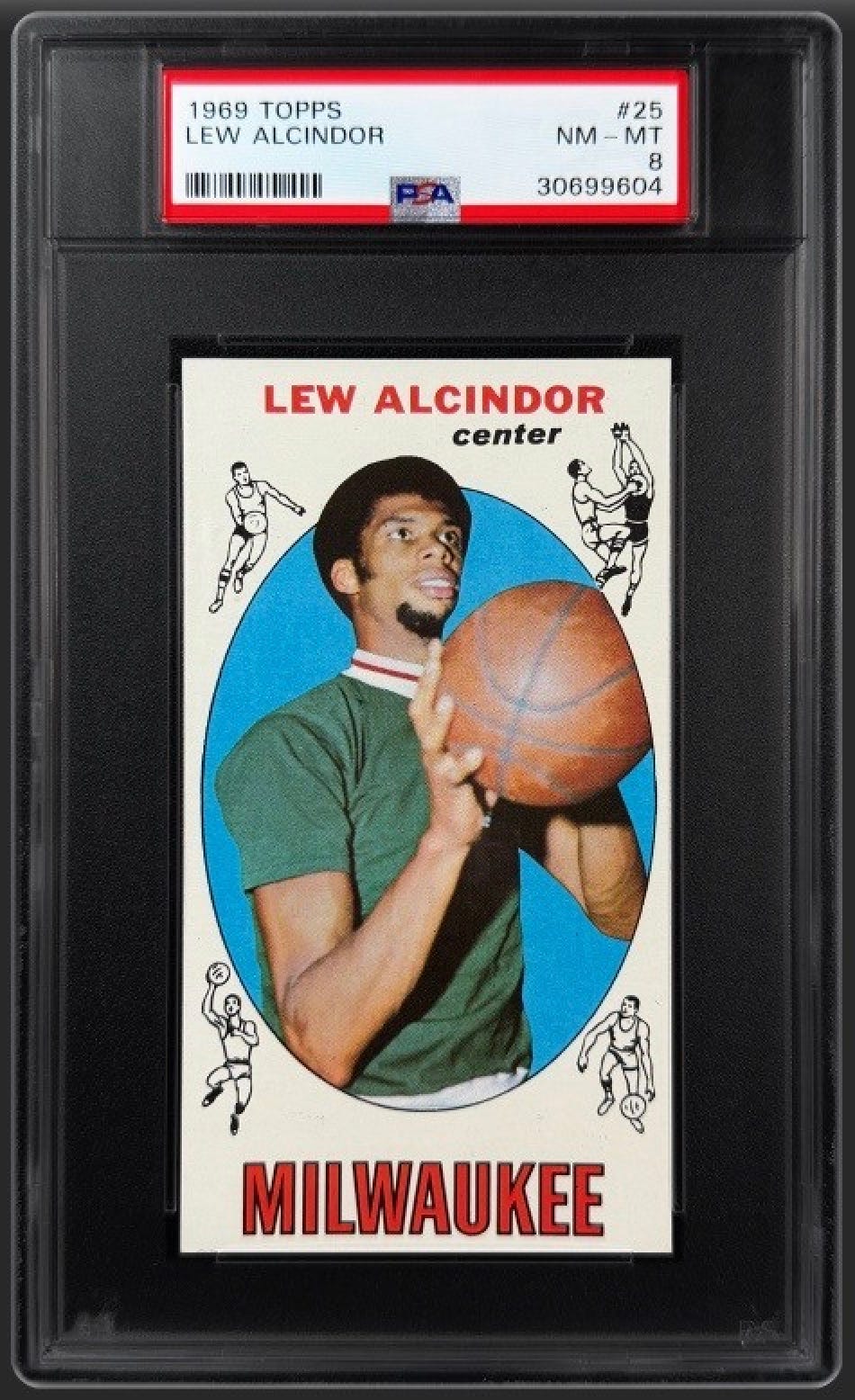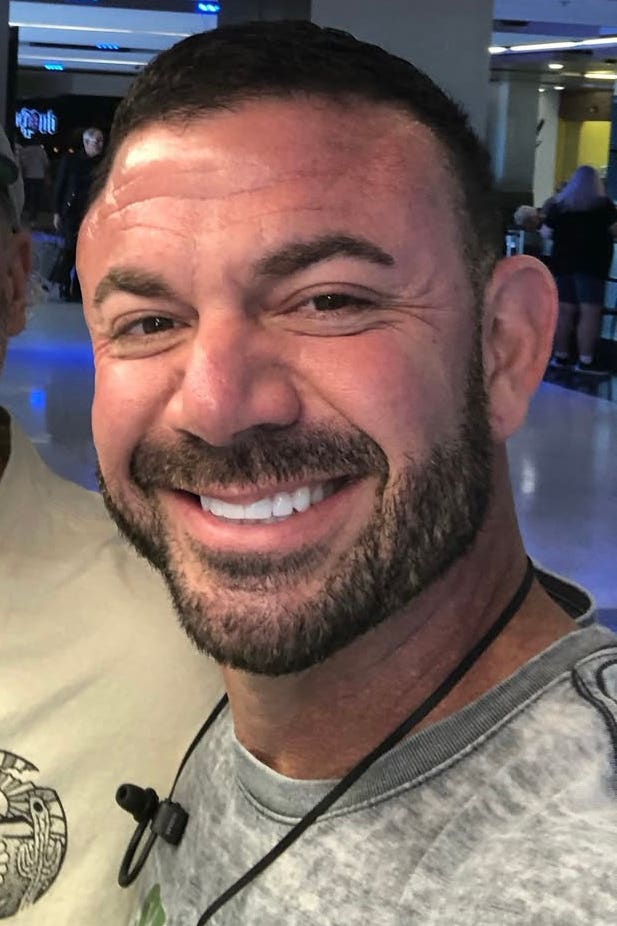Collecting 101
Globetrotters Haynes has seen and done it all
Before there was "Magic" Johnson, there was "the Magician." Before there was Pistol Pete Maravich, there was the "Fastest Gun Alive." While today's viewers of National Basketball Association contests can delight with the behind-the-back passes and crossover dribbles from the likes of Jason Williams and Jason Kidd, these ball-handling techniques were perfected by the master of them all: Marques Haynes.
The sorrow of this story was that Haynes never brought this ball-handling brilliance to the NBA. Most people only know Haynes from his time with the famed Harlem Globetrotters and his self-formed team, the Harlem Magicians. Haynes has had a major influence on the ball handlers who followed him, whether it was Oscar Robertson, Maravich or Johnson.
Today, from his home in Plano, Texas, a thin and still wiry Marques admits, "Yeah, I can still do all those tricks with the ball, as long as I don't have to move," he says with a laugh.
Golf is his game these days though it wouldn't be a safe bet to say that he still can't dribble behind his back and make a 50-foot set shot. Haynes' name was recently revitalized when he consigned some of his saved memorabilia and jerseys from his Magicians to a Heritage Sports Auction.
Other items included MVP trophies from the Globetrotters and a signed contract from the all-time basketball laugh king: "Goose" Tatum to a Heritage Sports Auction in Dallas. But the two unexpected pieces of Haynes' collection that wowed everyone with their results were two unsigned photos of Maravich and Haynes taken at a summer basketball camp that brought in more than $5,000.
Maravich, who was one of the most prolific scorers in both the collegiate ranks and later in the NBA and possessed dazzling ball-handling skills, died at the age of 40 after a pickup basketball game in California. Maravich's memorabilia and autographs stand high above any basketball player of the past 50 years with the exception of a Michael Jordan signed ball or one from Kareem Abdul-Jabbar but signed as "Lew Alcindor" from his earlier days.
"Pete could do a lot of things with the basketball, but he was really a quiet kid," said Haynes. "They tell the story about his dad, Press Maravich, who was his coach at LSU. When Press was recruiting players he would say, 'I need passers and rebounders. I don't need shooters. I got a shooter.'"
A lot of Maravich's tricks were picked up from Haynes, who had perfected them all over an incredible 51-year career playing professional basketball.
"We played a fast brand of basketball with the Globetrotters after I joined them in 1946," said Haynes. "We could move the ball and we could score."
Mainly though, the Globetrotters could make their fans laugh and often cause their jaws to drop with their wizardry. They brought a brand of basketball that had never been seen before by the largely all-white world of "peach baskets." Haynes developed his dribbling precision and balance by bouncing a tennis ball down a length of railroad track.
Haynes took part in probably the two biggest upsets in basketball with the first coming when his college team, Langston University in Oklahoma, shocked the Globetrotters.
"The Globetrotters head man told our coach, 'Zip' Gayles before the game, 'We'll get ahead of you and then ease up so you can stay up with us.' 'Zip' told him, 'Don't worry about us, our boys know how to play basketball, so shoot your best shot.' And, we beat 'em."
Abe Saperstein, who was the owner of the Globetrotters, couldn't wait to get Haynes in a Harlem uniform after that. And Haynes did sign with the organization in 1946.
The second huge upset came on a cold February day in 1948 when the Globetrotters challenged the team considered, at that time, as the best team in the world, the Minneapolis Lakers, champions of the Basketball Association of America (forerunner of the National Basketball Association).
The Lakers were the Celtics of their day, dominating the fledgling NBA with a powerful inside game of 6-10 George Mikan and 6-5 Jim Pollard. The most important basketball game of its time and perhaps of all time featured an all-white team playing the all-black Globetrotters on a cold day in Chicago.
"The Lakers got out in front of us early and were leading at the half," Haynes said. "I told Babe Pressley, who was team captain and coach, that we were gonna have to do to the Lakers what we'd done at Langston to beat the Globetrotters: fire from outside. We beat them on a buzzer-beating, 25-foot shot by Ermer Robinson." The Lakers went down, 49-45, to a sharp-shooting Trotter team. "Of course, Abe Saperstein took credit for the second-half turnaround," Haynes recalled with a smile.
Saperstein controlled just about everything the Globetrotter players did, according to Haynes. "Saperstein was a tight man with the purse strings." When asked about a Globetrotter per diem Haynes recalled, "Man we didn't know what the word per diem meant."
With today's NBA bench players making millions of dollars, it's hard for modern fans to relate to what the pro teams of the 1940s had to get by on, especially the Harlem GlobeTrotters.
Haynes had finally had enough of Saperstein by 1953 and formed his own traveling entertainment team, the Harlem Magicians, with himself as the key performer. Tatum eventually joined his team as well.
"He (Tatum) could walk across the street and make people laugh. We would gather at a hotel window and watch him do just that, just amble across the street. In our games, He would ad-lib funny tricks too," Haynes recalled. "We never knew what he was going to pull next in a game but it would draw laughs. 'Meadowlark' Lemon was best by far of all others who followed Tatum. He was one of a kind."
Meadowlark was a big admirer of Haynes' skills as was Bob Cousy, the Boston Celtic master ball-handler.
"So few of us really worked at dribbling the way Marques did," Cousy avowed. "He was an exceptional dribbler who saw the floor, could pass the ball, and had great competivive instincts."
"Trotters played the Lakers the first time, and Goose, at just 6-3 just couldn't keep up with the much taller Mikan in the pivot and Mikan could play, don't doubt that; he was not just a big stiff," Haynes recalled. "He had some talent. Pollard would come over and help out in the paint, too."
The Globetrotters, proving their first victory wasn't a fluke, beat the Lakers again, a year later, this time aided by a new and taller player, "Sweetwater" Clifton, who would later become one of the first black players in the NBA.
The Lakers did get revenge in a few later games but they had been augmented by decent outside threat Slater Martin and big 6-7 Vern Mikkelson, and truthfully the 'Trotters might have lost a little incentive having proven their point. The Globetrotters had demonstrated a valid point to the world though that the black players could play anywhere, anytime and were not just a clown outfit.
In one of the Laker games, Haynes and Mikan both gripped the ball and the powerful Mikan jerked the ball away causing Haynes to fall backwards and break his back in the process. It fractured one of his vertebra and when the doctors found out about it later they couldn't believe that Haynes continued to play in that game with a broken back.
When an interviewer, knowing that Haynes was a master ball hander, asked him what was his best shot, Haynes just gave him a wise look and said, "Whichever was necessary at the moment."
That translates into a man who would share and move the ball almost at will but could put in two when the need arose. Thi s was evident in the two great Globetrotter games against the Lakers when Haynes, in both games was the runner-up high scorer for Harlem.
You can't talk about the Globetrotters without asking about the team's signature song, "Sweet Georgia Brown," which is played during a warm-up drill with the 'Trotters zipping and palming the ball to the whistling and rhythm of the music. According to Haynes, the funniest story relating to warm-ups was when the team had an audience that included the Pope and put on their song and pass drill for the papacy.
"We played it through once, then someone said, let's play it again, which was rare. We usually stopped after one song. But we did it again and then for a third time," Haynes said. "I didn't know why we were repeating it until someone nudged me and said, look at the Pope. There under his robe, Pope Pius II was tapping his foot along keeping time with the bouncy music."
Overlooked and perhaps a bit forgotten, Haynes is the member of 12 Halls of Fame including the only regular Globetrotter player to be inducted into the Naismith (NBA) Hall of Fame. Haynes went in the same year with another basketball legend, Larry Bird, in 1998. Other Halls of Fame include the Oklahoma, the Jim Thorpe, the Southwest Athletic Conference and at his alma mater, Langston.
Haynes has campaigned hard for the NBA to recognize the former players who didn't get into the association because of their color. "Just like Major League Baseball has done for the Negro league players."
And Haynes seems to make quite a bit of sense; it doesn't seem to be asking much for a pension for these guys who were kept out of professional basketball because of the color of their skin, even if separate funding is necessary.
A distinguished spokesman for early professional basketball, today Haynes relishes his private time with wife Joan, a former model from Chicago, his two daughters, eight grandkids and two great-grandchildren. Joan helps him with his business dealings.
Collectability
From a memorabilia standpoint, there were several ways in which Haynes could have raised his stock as far as his collectibles are concerned.
Though Haynes appeared in the original movie release of "The Harlem Globetrotters Story" and later "Go Man Go," these movies were seen in the very early 1950s and thus more than a half-century old for current fans to take note of. Most movies of sports stars have helped improve the image and perception of those potrayed. After the release of "Field of Dreams" in 1989, "Shoeless Joe" Jackson interest dramatically increased within the hobby. The good news for Haynes fans is Columbia Pictures is currently planning a movie on the Globetrotters, directed by Penny Marshall.
Had Haynes even played in the NBA briefly, his memorabilia would likely be more prevalent in hobby circles. While many people know and remember the Globetrotters, a certain legitimacy and interest from team buyers would have helped with even only a few years playing time in the National Basketball Association. Haynes turned down three offers from NBA teams because he was making more money with his Harlem Magicians team at the time. Minneapolis Laker coach John Kundla said at the same time the Globetrotters were beating the Lakers: "Haynes could have played pro ball with any team. He was the best they had."
If Haynes had adopted a nickname like some of the other Globetrotter heroes such as Reece "Goose" Tatum, Nate "Sweetwater" Clifton or "Meadowlark Lemon," his name recognition would have likely increased dramatically.
Haynes has been a fairly frequent and personable signer throughout the years and because he played basketball at the professional level for 51 years, he has quite a bit of memorabilia out there.
As it is, Haynes is a tremendous bargain for someone wishing to touch a part of the professional basketball scene in its vintage years. Here's a guy who's rubbed elbows and played the game with the great Jesse Owens, Wilt Chamberlain and Sugar Ray Robinson, not to mention being in a movie with Sidney Poitier and meeting the Pope.
What was it like to watch Haynes? From the feature movies and early clips, the man absolutely flowed on the courts, like a human wave that could go forward or quickly backward or to either side. His almost lateral, leaning moves were deceptively fast because Haynes was so fluidly smooth. His forte was defending the ball and killing the clock and nobody then or now could do it better. The ball almost seemed like it was attached to his hand by a string.
"There's a time to be fast and a time to slow it down," explained Haynes.
In the days before the 24-second shot clock, and with a 'Trotter lead, he stalled out the Minneapolis Lakers for a victory. He remembers it well and said, while he was dribbling and keeping the ball out of reach from the lunging Lakers, the referee told him, "Let's play basketball." He shot back, "I am playing basketball."
Achievements, he's had a few
In his half-century of professional basketball he's appeared in more than 12,000 games in 103 countries and held the record for scoring the most points (250,000-plus) when he retired.
He was instrumental in encouraging the NBA to recruit blacks for the first time beginning in 1949. The master dribbler played with one of the last four teams to perform on the old Madison Square Garden floor. He has a 12-mile section Oklahoma State Highway 97 renamed as the "Marques Haynes Highway."
To purchase Marques Haynes personally signed 8-by-10 photos, send $20, money order or cashier's check, no cash, along with a self-addressed, postage-paid, 8-by-10 or larger return envelope included with to M. Haynes, P.O. Box 262042, Plano, Texas, 75025.








